Luggage and Packing
Researching travel can be fun but knowing what to pack, how to pack and what kind of lugagge to use, can test your thinking process, patience and consume plenty of your time. Definitely one of the most frustrating moments in planning travel. But…there is a simple solution.
First you need to work out how long you will be away from home, the climate(s) and the weather you will be expecting and in what environment you’ll be doing your travels. This will sort out what kind of clothes and shoes you’ll require and perhaps any accessories and other items. Then you can work out what size and sort of luggage is best and lastly how to pack things. When done right the same principles will apply every time you travel making packing easier and less frustrating.
Luggage Types
Luggage (bags etc.,) can be classified into many categories and uses, but we’ll try and keep it simple and discuss those we can lug onto a plane for international air travel and divide them into soft and hard, carry-ons and check-in luggage.
Carry-on luggage: the most popular types are spinners (cabin cases), backpacks, duffel bags (with and without wheels), overnight/weekender bags, totes and laptop bags. There’s also the occasional garment bag, which you’ll see mostly in Business and First Class on shorter routes.
Checked luggage: for the cargo hold, medium and large size softside or hardside spinners (trolley cases) and large wheeled duffel bags. Very rarely you’ll see trunks. They are not ideal for a tourist or someone travelling around the world, but more akin to someone emigrating to a new country to start a new life.
Durability and Security
For security and the safety of my belongings I prefer hardside cases made from polycarbonate rather than softside cases made from hardwearing materials, such as nylon, and it is for a good reason. They are strong, sturdy, less prone to wear and tear and damage and are easier to keep clean. If the polycarbonate receives a bad knock it can be put back into shape, if damaged it can easily be repaired. So first of all think of hardside cases then select one with an alloy (aluminium) central frame that can be secured by key locks or combination locks. Some will only have TSA approved locks. You can always supplement the locks with a luggage strap. They come in handy just in case the lock(s) break, get damaged or you lose the keys. One piece of advice: take a photo of the locks. Each lock has a code number that identifies the key used to open it. This way if you lose the keys a travel store or repair service can get you a new set. With combination locks this is not required, just don’t forget the combination.
The softside cases, either in polycarbonate or nylon, use zips. Which are not as secure as locks. Zips can be pried open and rezipped without one knowing they have been tampered with. The softside cases are great if you want to add things while travelling and will be easier to zip up than a rigid framed case. When the framed cases reach their contents limit they will be a real struggle to close. What I suggest is if you prefer softside cases add one or two luggage straps that can be locked. Some straps have combination locks others are both TSA and combination. This will make the cases more secure and a less desirable target for thieves.
Another good idea for added protection, is to pack everything inside one or two large plastic bags so everything is sealed and cannot be grabbed through the unzipped portions of the case if someone tries to get in. This is suitable for cases that don’t have zippable internal compartments. Plastic bags may also be a good idea to protect your stuff in tropical regions where there is high humidity. Also some types of packing cubes can do the trick or combine the two, the large plastic bag(s) with the cubes inside.
The zippable softside cases, both polycarbonate and nylon, have one advantge on the hardside cases with frames, they are lighter. Perhaps by up to a kilogram and a half. So if weight is your major concern then go for the softer version.
One rule you must not overlook is never put valuables in checked luggage. Keep them with you in the cabin. Also do not store lithium-ion batteries in checked luggage. If they catch fire it is best it happens in the cabin where they can be put out, in the cargo hold this could cause a catastrophic fire.
What to Pack
This comes down to personal preference. What I suggest is clothes that are easy to wash and don’t need ironing if possible. If not, try to wear stuff more often but mix and match. Of course underwear, socks, briefs, singlets (tank tops) and t-shirts would need to be changed more often. The way I work is I’ll select a set of pants and shorts and then add several tops that can be mixed and matched. So for example if we have four different pairs of pants, we then can mix and match eight, ten or so tops. Pants are heavier so less of them and more tops that are lighter. Pants usually are also good to be worn for several days even up to a week depending how sticky the weather is, while tops can last a few days less as most of the heat is generated in the higher portion of the body, but work out a cycle of what to wear and when over the period you are travelling. This is from a man’s perspective. Women have similar choices if they want to wear pants but they have the option of full length dresses or skirts and mix and match tops. Women can also carry a little more if they choose wisely, again depending on the climate and weather.
How to pack
There’s no perfect technique on how to pack, everyone has their way of doing things. I think the best way to pack is to use packing cubes. I also use resealable plastic bags and the occasional vacuum sealed bag that uses a valve to expel air. There are also versions that require a pump, but you’d need to take one with you otherwise a vacuum cleaner would have to be used to draw the air out. An awkward choice I think. The added bonus packing with cubes is you can separate all your clothes, shoes and accessories, etc., in an orderly and a colour coordinated fashion.
One good technique to use is to roll up anything that can be to save space. You can do this with pants (jeans and chinos), t-shirts, pullovers, jumpers, soft flowing tops, etc. Then line them up inside a cube and zip up. Business and dress shirts should be folded flat and placed one on top of each other preferably with a collar stay, but remember all shirts will wrinkle unless they are wrinkle-free (non-iron dress shirts). There’s no way of stopping it and only solution is to iron the shirt at destination. Suit jackets too have a particular way of being folded to minimise creases. Heavier winter coats and jackets can be folded or rolled and then vacuum sealed to save space. Socks should be rolled and stuffed into shoes and the shoes packed with their tops facing each other in reverse directions so one shoe has the toe over the other’s heal and then slipped into a plastic bag inside the packing cube or drawsting bag. The plastic bag will keep any dirt picked up by the shoes away from the packing cube keeping them clean.
Storage and Maintenance
When luggage is not in use, store and seal them in plastic bags and keep them in a dry place. The interior should have silica gel sachets to keep humidity at bay. This is so no insects, vermin or mold can ruin the internal lining. Also with the added benefit of keeping them clean and sanitary. Check the locks, zips, wheels and frames regularly after every trip hopefully to extend their useful life. Repairs can be expensive and sometimes not worth contemplating when the cost gets close or the same of a new bag or case.
Luggage Brands I Use
Lastly, a few comments on the brands of luggage and packing cubes, which ones I’ve used and recommend. Most of these brands make a variety of luggage: bags, cases etc., but I’ll concentrate only on the ones I’ve had experience with in my travels.
Hardside case carry-on: Eminent, Lojel
Hardside case checked-in: Antler, Eminent, Lojel, Samsonite
Softside case carry-on: Paklite
Weekender/Overnight bag carry-on: Samsonite
Backpack: High Sierra, Slazenger
Briefcase/Laptop bag: Samsonite
Garment bag: Antler
The brands I use the most often on my travels are Lojel, Samsonite and Slazenger. The checked luggage is a medium size Lojel Rando of 79 litres capacity. A hardside polycarbonate spinner case with the solid alloy frame built in with a TSA combination lock.
Lojel Rando
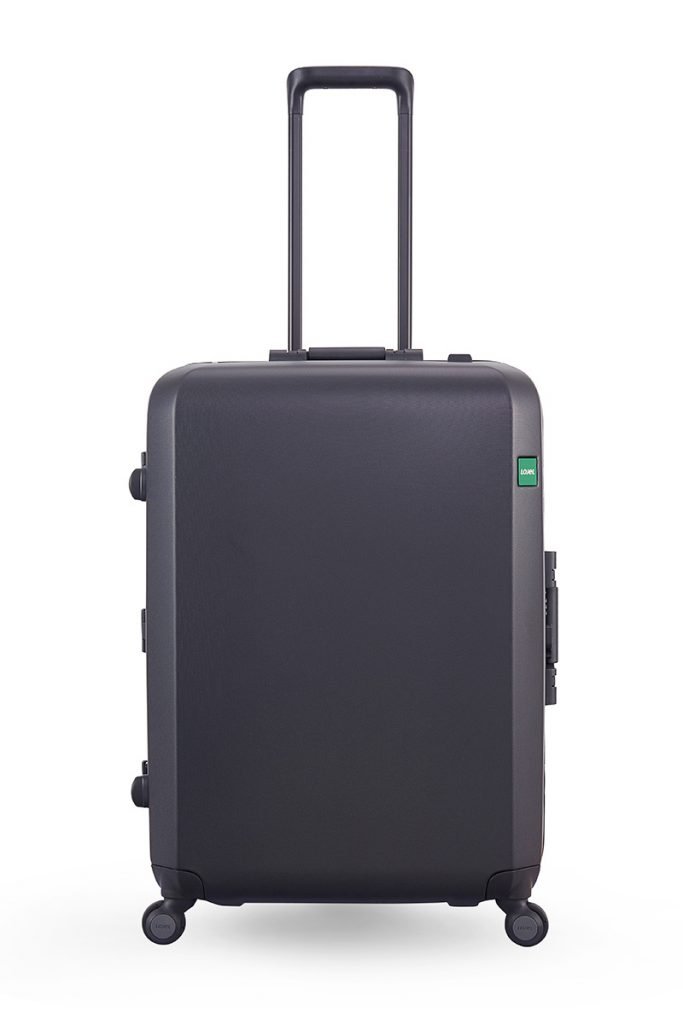
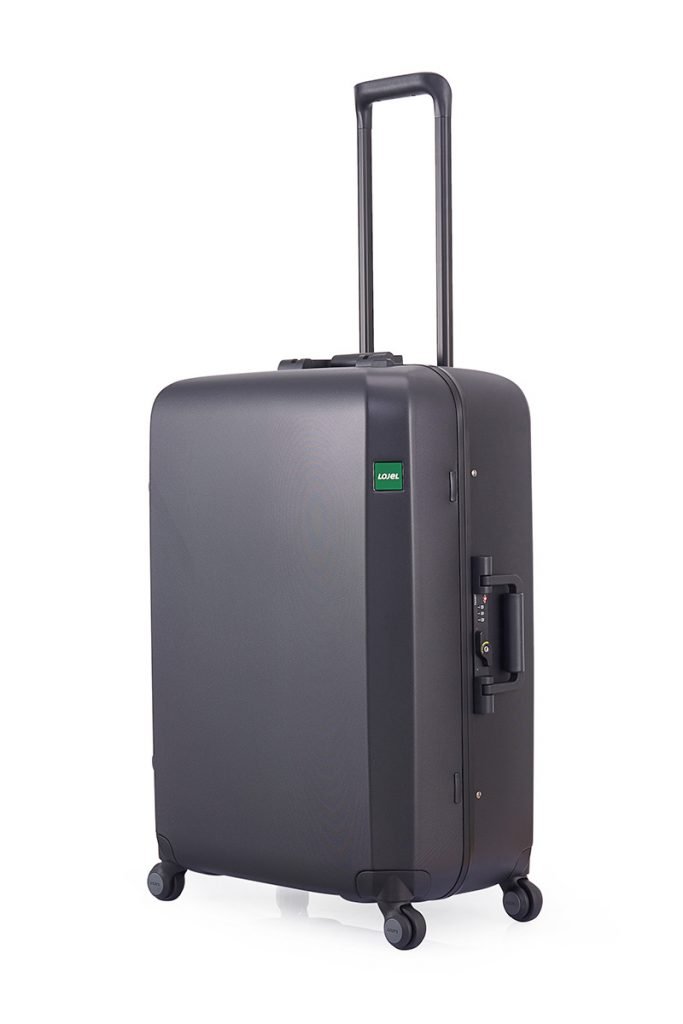
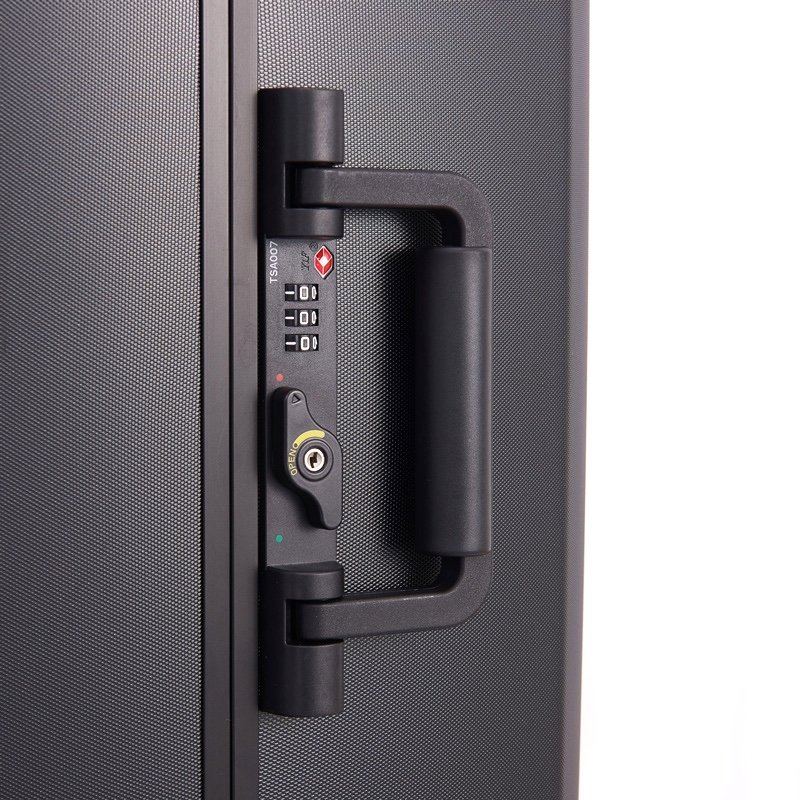
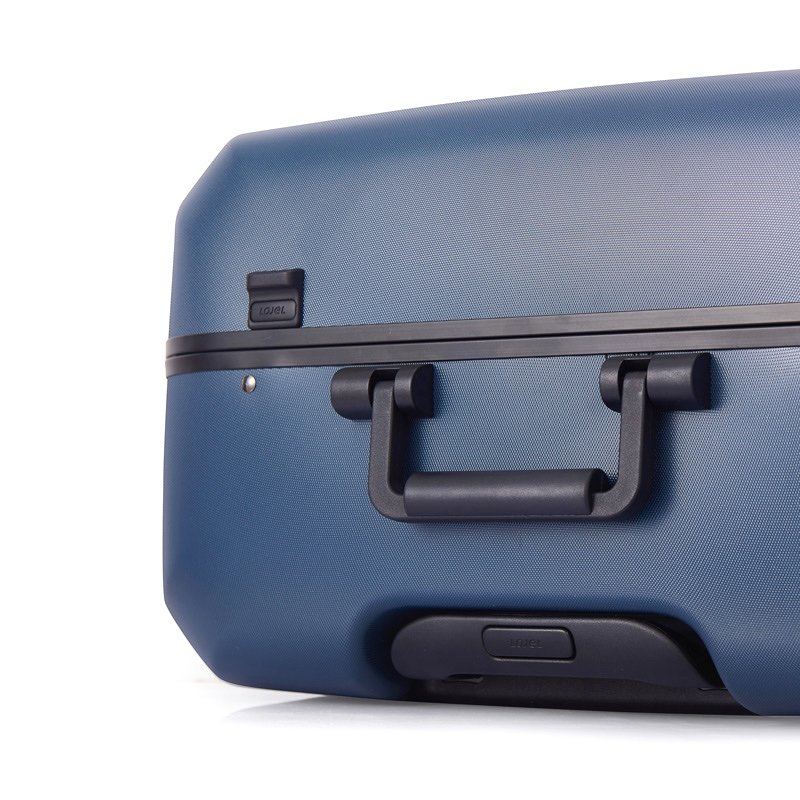

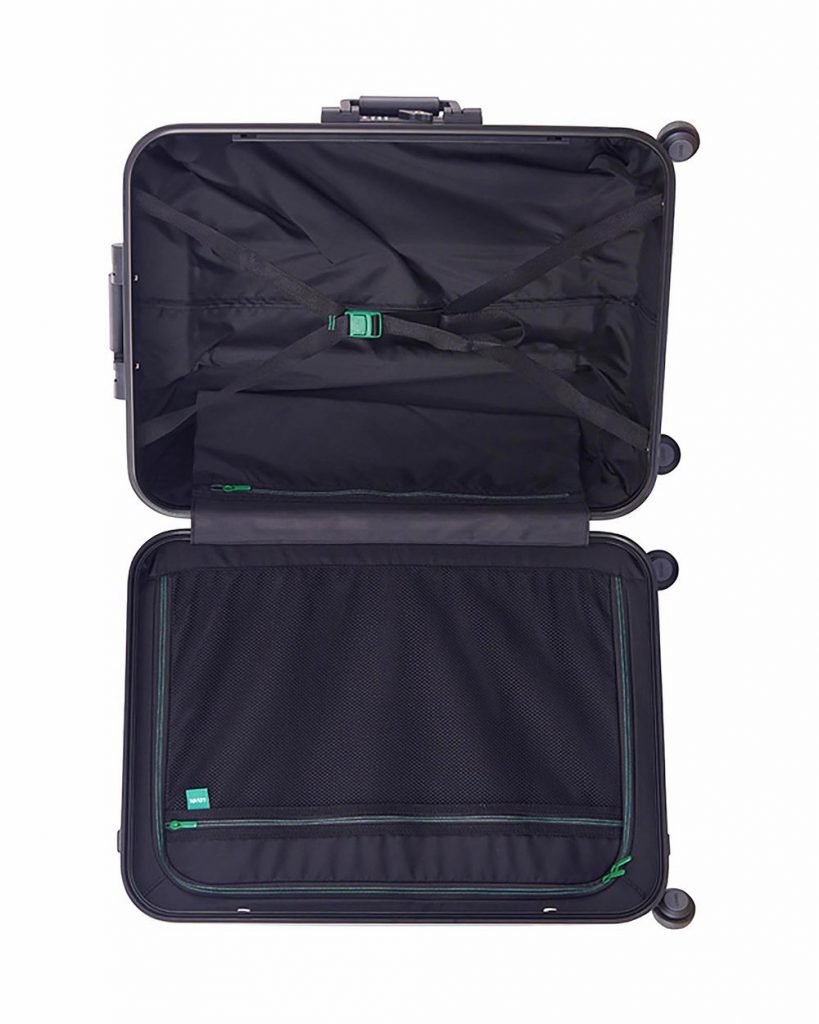
In the cabin I take a Slazenger backpack or a Samsonite weekender bag (both able to fit a laptop) and a Samsonite briefcase, specifically just for a laptop, ipad and notepads, etc. I also take with me a bumbag (fanny pack as the Americans call it) for keys, loose change, etc., and a ticket/passport wallet both that can be stored in either the backpack or weekender.
In the past I’ve also used Antler, Eminent and Samsonite medium-size hardside cases. All with the alloy (aluminium) frame, either with one TSA lock or twin latch style locks. The Eminent is the only one that is not a spinner. It runs on two wheels and goes only in one direction. A very sturdy case though as the wheels are not so exposed as those on the spinners. All these are great cases but I’ve now found the Lojel to be the best of the lot. Slightly lighter and easy to open and close with the right styled interior.
Other brands I recommend, but as yet not fully tried/tested or used in serious travel conditions are Delsey, Incase, Roncato, Targus, Vaude and Victorinox. All have their specific uses, like Incase and Targus which are targeted more towards laptops and tablets. Delsey, Roncato and Victorinox do cases, bags and backpacks while Vaude is only over the shoulder bags and backpacks (very good I might add).
Packing Cubes I Use
There is no one brand I use but several. Probably of those that I have the IKEA brand is the one I’ve used the most. I also have Globite, Go Travel, Bon Voyage (a brand sold by Officeworks), Outbound (The Reject Shop), Skylite (Aldi) and Swiss Equipe (Officeworks).

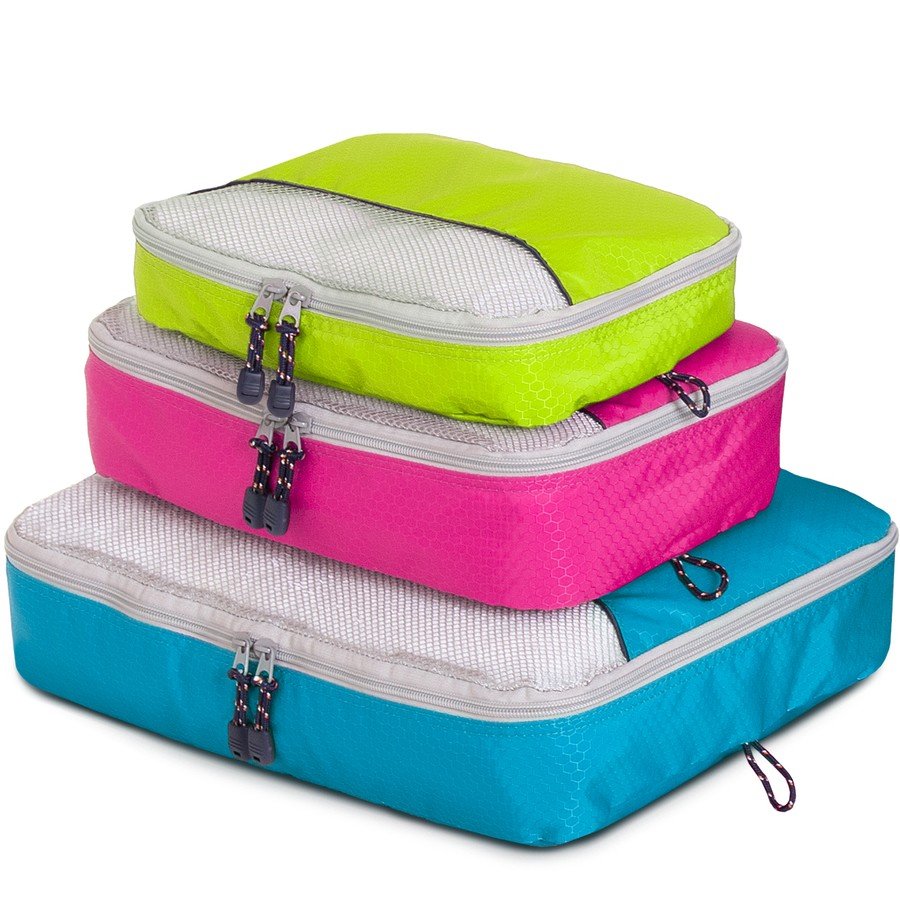
There’s nothing wrong with buying cheap packing cubes such as those from Kmart, IKEA and Aldi (Australian and British version of Germany’s Aldi). They all do the job as long as you don’t over pack them and put strain on the stitching and zips. Also good for packing are toiletry bags and cosmetics (makeup) bags. Both easily picked up at supermarkets and department stores as kits.












1 Response
[…] For more details on how and what to pack see the article Luggage & Packing. […]